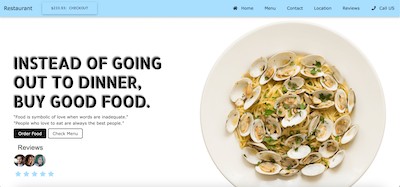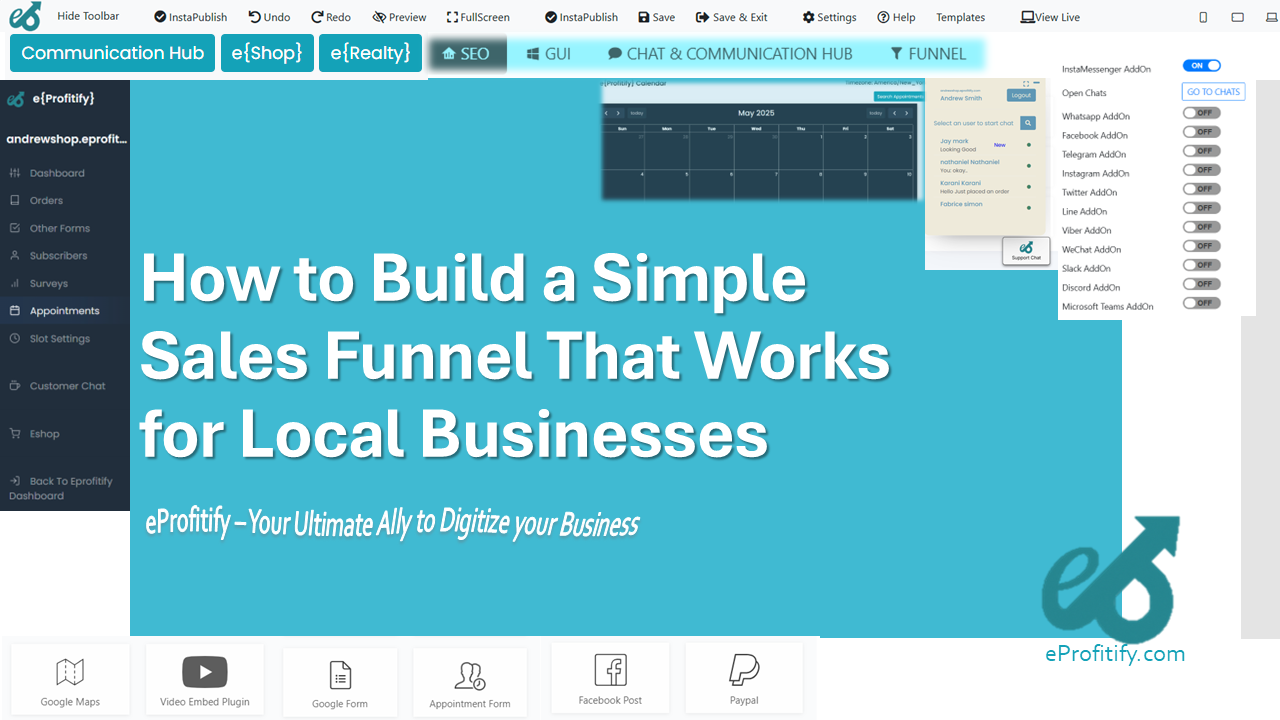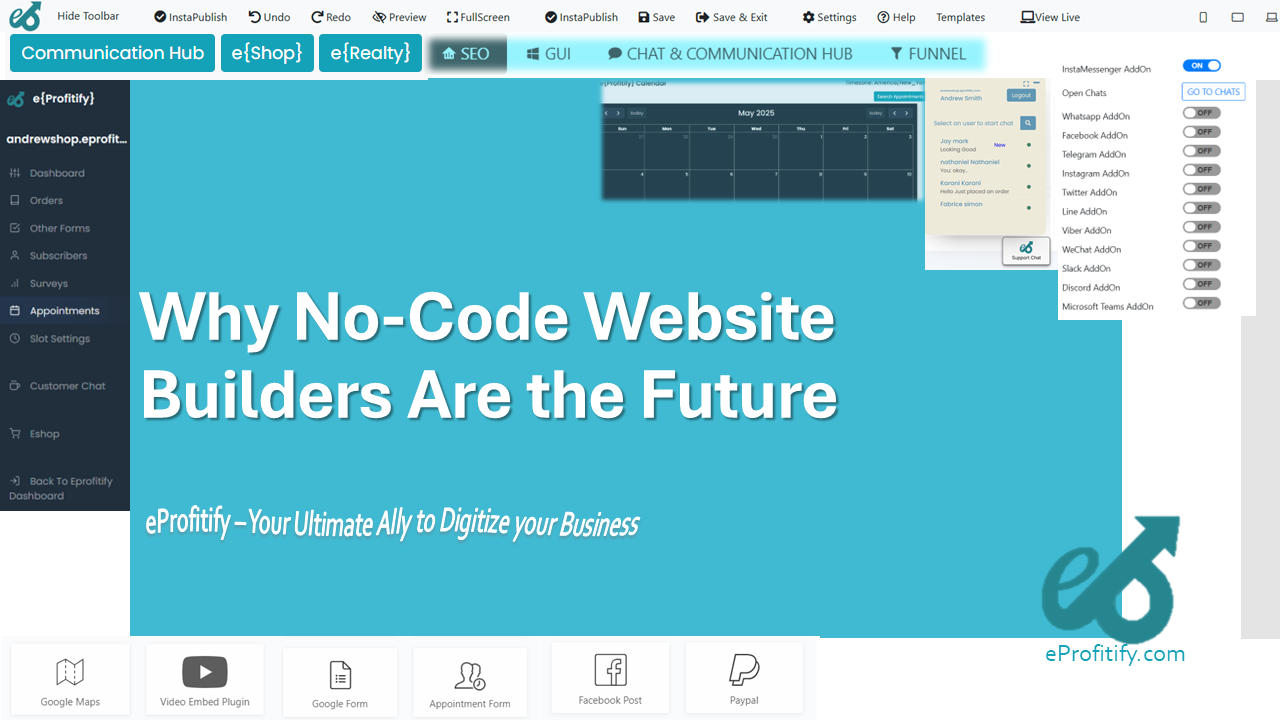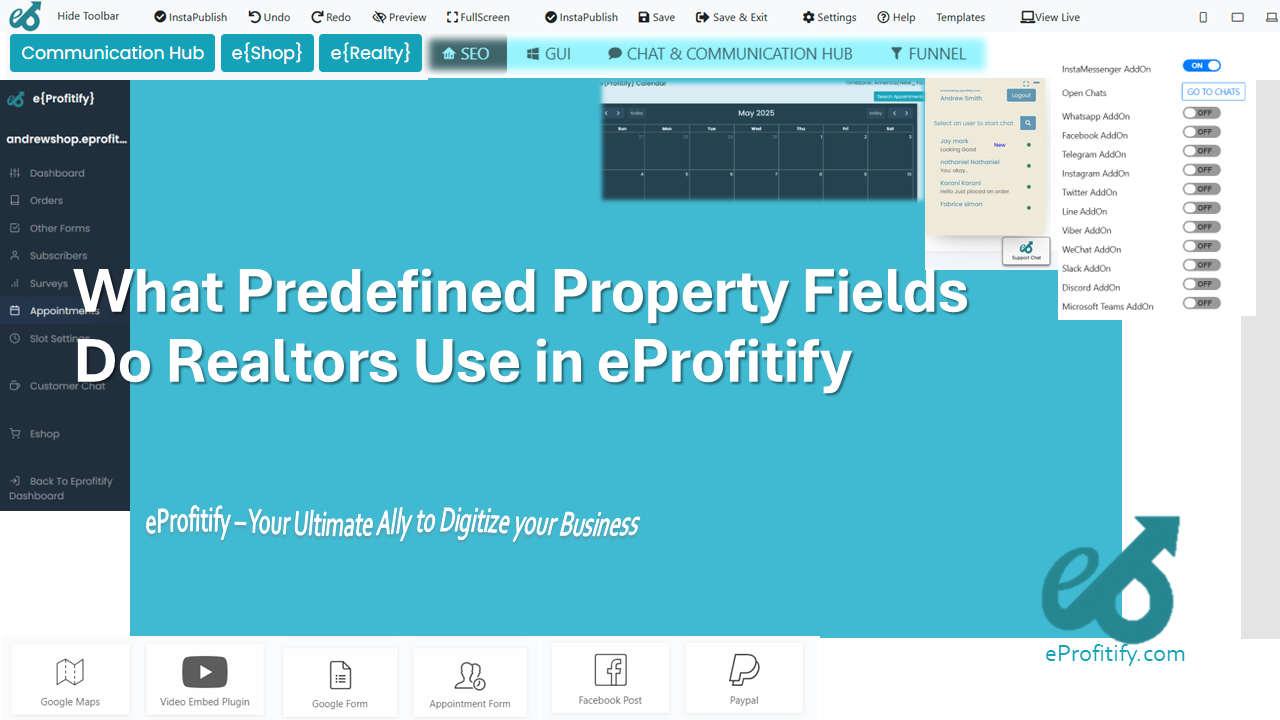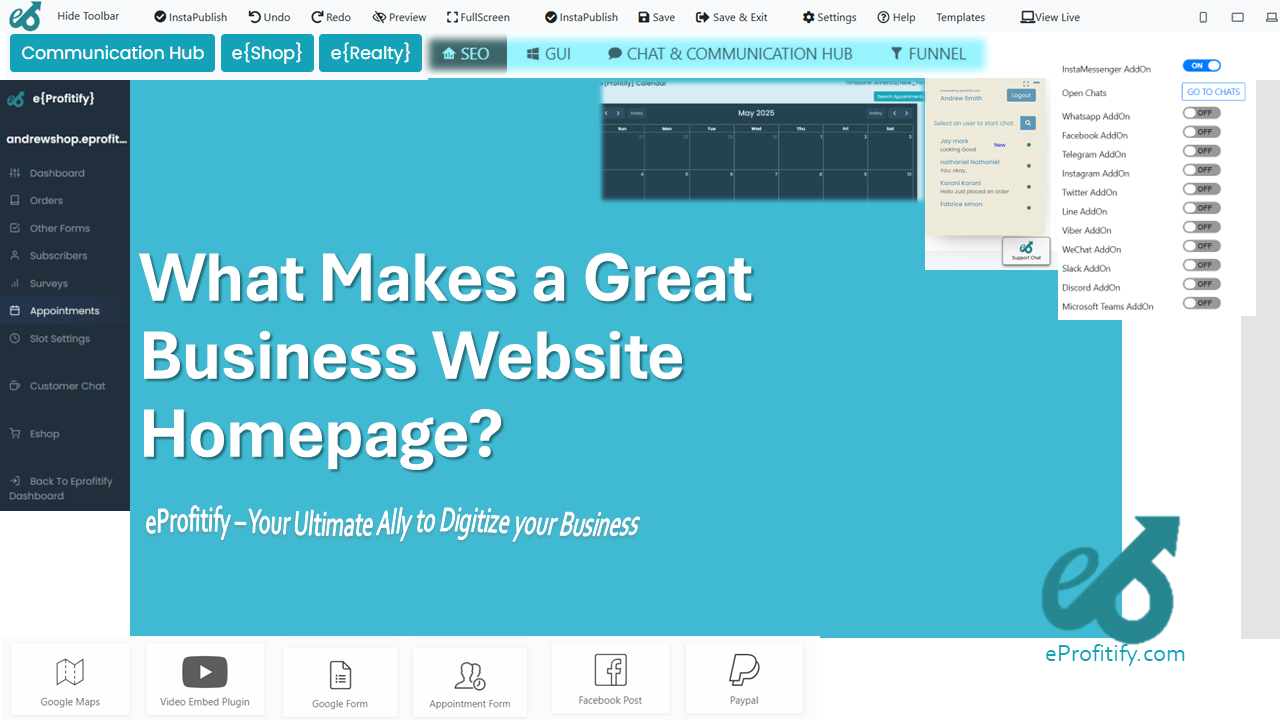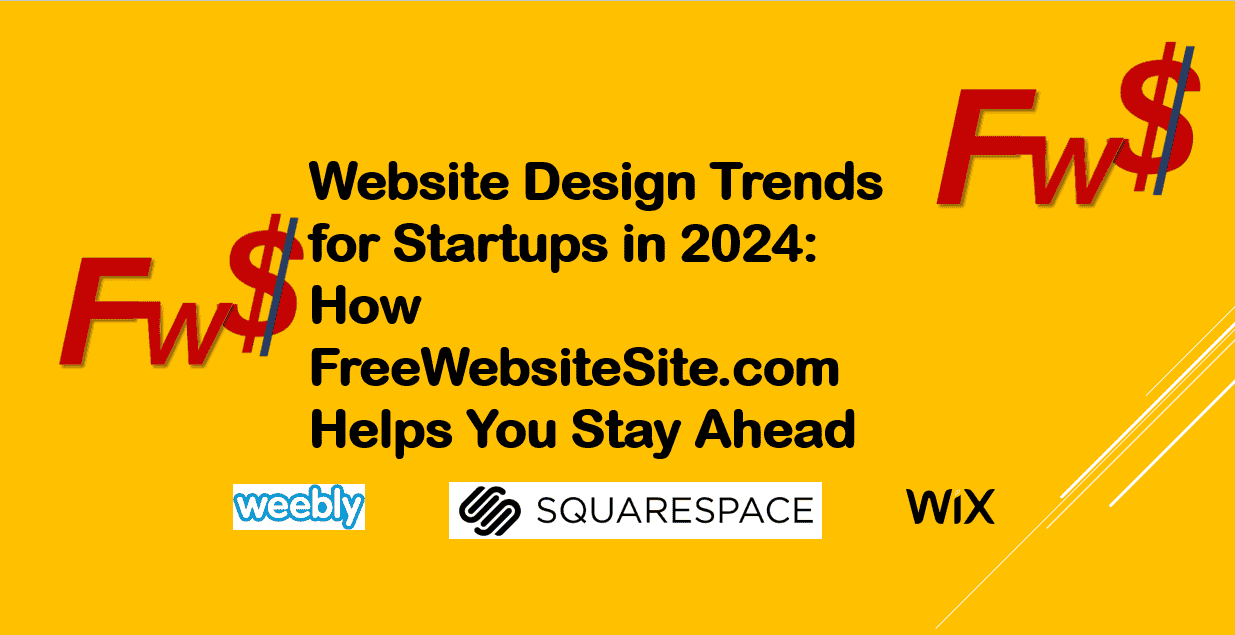How to Choose a Business Name That Looks Good on a Logo
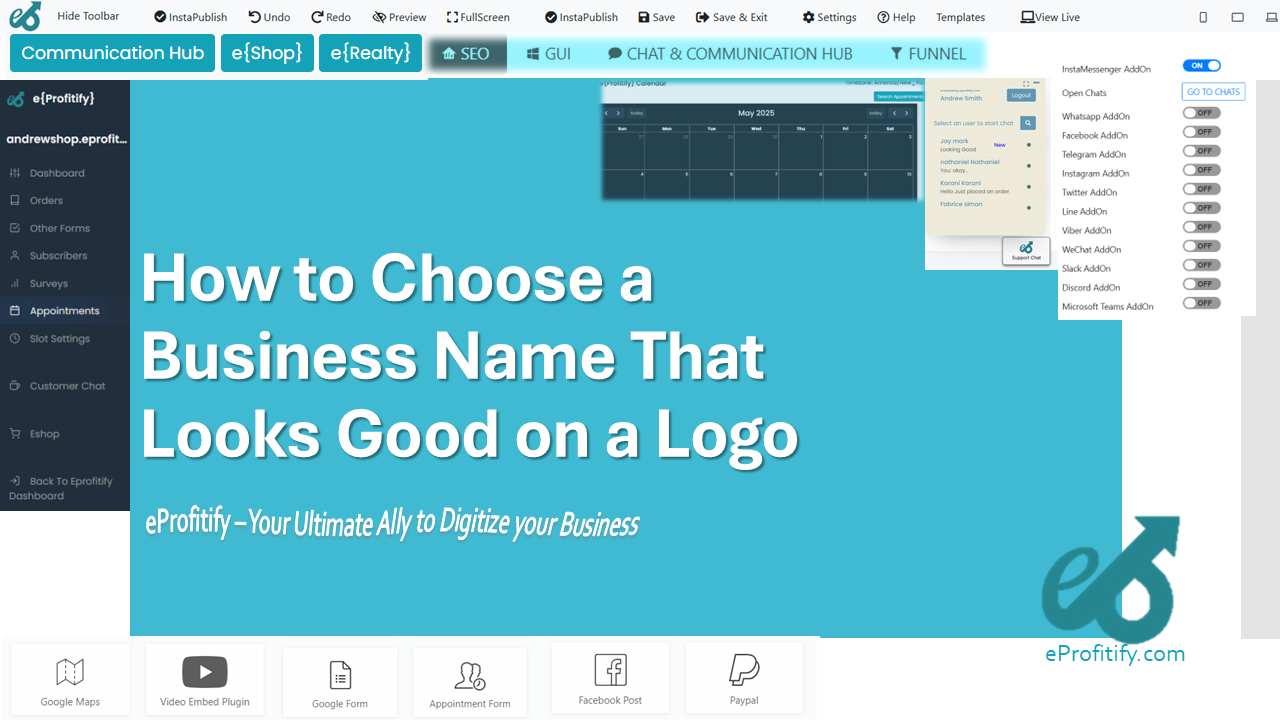
Schedule a LIVE Zoom call with an eProfitify Expert.
How to Choose a Business Name That Looks Good on a Logo
Selecting a business name is a critical step in establishing your brand identity. A well-chosen name not only resonates with your audience but also translates seamlessly into a visually appealing logo. This article explores practical strategies for choosing a business name optimized for logo design, supported by industry statistics, and highlights how tools like eProfitify streamline business management post-launch.
1. The Power of a Strong Business Name and Logo
A business name and logo are the cornerstones of brand recognition. Studies show that 77% of consumers make purchasing decisions based on a brand’s name and visual identity (Forbes). Additionally, logos are instantly recognized by 75% of people, making them indispensable for differentiation in crowded markets (Stanford University). A name that looks good on a logo reinforces memorability, professionalism, and trust.
2. Key Strategies to Choose a Logo-Friendly Business Name
2.1 Prioritize Simplicity
Short, concise names (ideally 1-3 words) are easier to design into logos. Brands like Nike, Apple, and Sony exemplify this principle. According to Shopify, 55% of consumers find shorter names more memorable, and logos with fewer elements are 38% faster to recognize (Nielsen Norman Group). Avoid complex spellings or niche jargon to ensure readability.
2.2 Ensure Relevance and Meaning
Align the name with your brand’s mission, values, or offerings. For example, “Etsy” evokes handmade goods, while “Zoom” suggests speed and connectivity. A HubSpot survey found that 64% of consumers prefer brands with names that clearly indicate their purpose. Use metaphors, alliterations, or cultural references to add depth without clutter.
2.3 Test Visual Adaptability
Visualize the name in different fonts, colors, and layouts. Does it work as an icon, wordmark, or combination mark? Names like “Twitter” (a bird) or “Burger King” (a burger crown) integrate imagery effortlessly. Tools like Canva or Adobe Spark allow quick mockups to test logo compatibility.
2.4 Check Domain and Trademark Availability
Secure a matching domain name early. 93% of businesses report that a matching domain boosts credibility (GrowthBadger). Use platforms like GoDaddy or Namecheap to verify availability. Trademark checks via USPTO.gov prevent legal conflicts.
2.5 Consider Scalability
A name that’s too niche (e.g., “Chicago Pizza Co.”) limits future expansion. Opt for flexibility, as 67% of startups pivot their offerings within five years (CB Insights).
3. The Role of Typography and Color in Logo Design
Once a name is chosen, typography and color determine its logo appeal:
- Typography: Sans-serif fonts (e.g., Helvetica) convey modernity, while serifs (e.g., Times New Roman) signal tradition.
- Color: 85% of consumers cite color as the primary reason for buying a product (Colorcom). Align palettes with industry norms—blue for trust (finance), green for sustainability (health).
- Whitespace: Clean designs with ample spacing improve readability by up to 40% (MIT).
4. Leveraging Digital Tools for Brand Management
After finalizing a name and logo, platforms like eProfitify simplify business operations. As a leading website publishing and management tool, eProfitify offers:
- Instant Messaging: Engage customers in real time to boost retention (businesses using live chat see 35% higher satisfaction rates).
- Appointment Management: Automate scheduling, reducing no-shows by 30%.
- Ecommerce Integration: Seamlessly manage inventory, payments, and shipping.
- CRM Features: Track customer interactions and personalize marketing campaigns.
- Analytics Dashboard: Monitor traffic, conversions, and engagement metrics.
With 89% of small businesses reporting improved efficiency after adopting integrated tools (Gartner), eProfitify’s suite ensures seamless brand scaling.
5. Statistical Insights: Why It Matters
- Startups with memorable names grow 2.5x faster than those with generic names (Harvard Business Review).
- Brands with professionally designed logos retain 50% more customers (DesignMantic).
- Companies using all-in-one platforms like eProfitify save 20+ hours monthly on administrative tasks (McKinsey).
Conclusion
Choosing a business name that excels in logo design requires balancing simplicity, relevance, and scalability. By prioritizing visual adaptability and leveraging tools like eProfitify for post-launch management, businesses can build a cohesive brand identity that drives growth. In an era where 60% of consumers prioritize memorable logos over competitors (Adobe), strategic naming and digital efficiency are non-negotiable.


